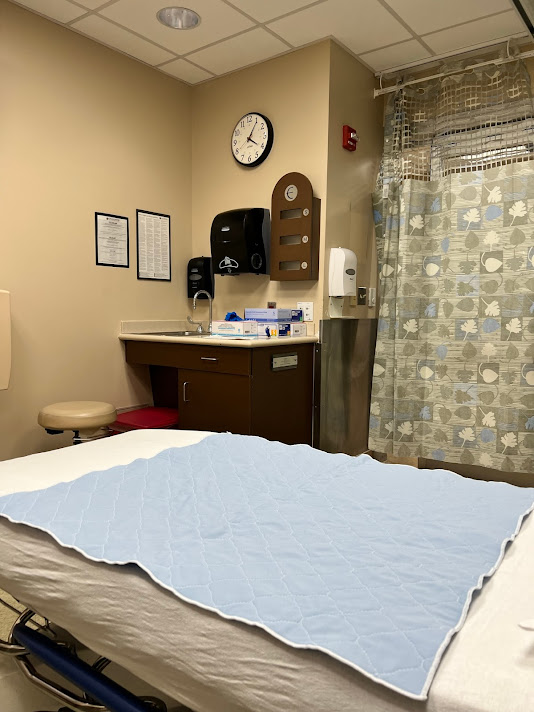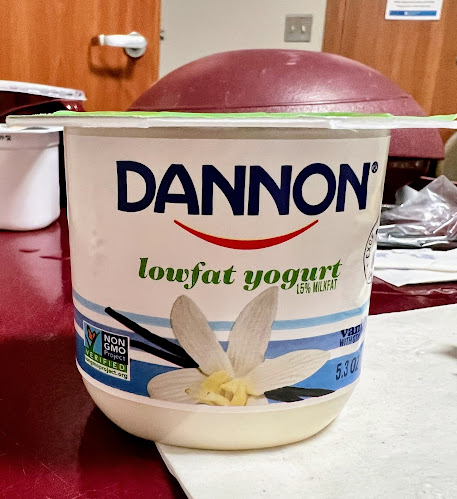 |
| DISORIENTED: My 5-day hospital stay for pneumonia began here in cubicle No. 30 of the Emergency Department on March 22, 2022, and ended with my discharge on March 27, 2022. |
By VICTOR E. SASSON
EDITOR
ENGLEWOOD, N.J. -- "No" was my first reaction when my doctor ordered me to drive a short distance from his office to the hospital, and check in at the Emergency Department.
Of course, I know this hospital, which has played a big part in keeping me healthy since September 2011, when I had open-heart surgery there and received a new aortic valve (from a cow).
And starting in March 2012, after weeks of cardiac rehab there, I became a hospital volunteer, working 4 hours three days a week.
I eventually joined the Visiting Hearts Program, volunteers who visit open-heart surgery patients during their recovery in the hospital, and discuss their rehab and futures.
Covid-19 pandemic
Those visits ended and the entire volunteer program was suspended for 14 months during the height of the Covid-19 pandemic, but some of us returned in May 2021, and I was assigned to the Cardiac Services Waiting Area, showing patients where to go or pushing a few of them in wheelchairs for heart catheterizations, stress tests, X-rays and other services.
That day at the doctor last week, I considered myself to be a "healthy" 77 year old who wasn't in need of hospitalization, who walked 1.5 miles to 3 miles a day as a volunteer or shopping in Costco and supermarkets 3 or 4 days week, and watched what he ate.
Huffing and puffing
But lately, I had been experiencing shortness of breath, and was huffing and puffing after I climbed the 17 steps to my bedroom the night before I called to make an appointment with my primary care physician.
I had a few other complaints, but was surprised to hear my primary care physician, Dr. Glenn Brauntuch, tell me I had pneumonia, and I wondered whether I had caught it in the hospital, even though I was Covid-19 vaccinated and boosted, wore 2 masks when I volunteered, and washed or disinfected my hands 3 or 4 times an hour.
So, I drove to the hospital, leaving my car with a parking valet, and checked in at the front desk of the Emergency Department, where the nurse said, "You look familiar."
I told her I was a volunteer there.
That's how my 5-day hospitalization began, and now that I am home, I don't feel as healthy as I did before, and I'm really feeling my own mortality.
 |
| HEART MONITOR: I had to wear this heart monitor 24 hours a day, and it required a number of battery changes and often stopped sending data to the nurses station, prompting a visit from a nurse. |
Open-door policy
After my open heart surgery in 2011, I had a room all to myself for the 4 days before I was discharged, but this time, I shared a room with another patient.
Two patients, 2 beds, 2 large screen TVs competing with one another, but the same complaints about the food.
"The food here sucks," the Navy veteran in Bed 2 declared loudly one day.
Still, the two hospitalizations had a few things in common:
The door stayed open to the lighted corridor 24 hours a day, and inside there was the sound of rushing air all the time.
In 2011, my door was opposite the nurses station and the constant chatter robbed me of sleep. This time, I brought my custom-made earplugs from home to help me sleep.
But now, when I complained my 6th Floor room was too cold, the nurse sent someone to get me a couple of extra cotton blankets, explaining she had no way of adjusting the room temperature.
Doctors, nurses
And there was a steady parade of medical personnel approaching my bed at all hours of the day and night, and waking me up, so I got little actual rest:
There were daily visits from the emergency room doctor who saw me before I was admitted, day nurses and night nurses who gave me cough syrup with codeine and other medications, and others who treated my respiratory problems, measured the percentage of oxygen in my blood, stabbed me with a needle to draw blood, took my "vitals" and asked me to get on a scale.
My identity was reduced to a bar code on a plastic band around my wrist each one of them scanned.
I also had to urinate into a pitcher-like plastic container with a flimsy top I kept on the bathroom sink so the nurses could "measure" the flow.
 |
| OFF TASTE: I also liked this dinner of Shrimp with Mango Salsa, but the taste and texture of the crustacean was off. |
Why serve unhealthy food?
I've been serious about what I eat and what I don't eat for a couple of decades now after writing about budget restaurants for The Record of Hackensack and then starting my own food blog -- Do You Really Know What You're Eating? -- after I retired in 2008.
I also had read the great reporting in The New York Times and Consumer Reports magazine on the widespread use of human antibiotics and harmful growth hormones in raising the vast majority of chickens, pigs and cows slaughtered for sale in supermarkets or use in restaurants.
Since my first hospitalization in 2011, I've never liked the food at Englewood Health, and have never understood why a hospital would knowingly serve unhealthy food to its CEO, medical staff, patients and visitors alike.
(And I wondered why when the hospital was rebranded Englewood Health from Englewood Hospital and Medical Center several years ago the powers that be didn't go all the way and call it "Englewood Life"?)
Organic produce?
The hospital cafeteria used by staff, volunteers and visitors alike offers breakfast, lunch and dinner, and the same kitchen prepares made-to-order meals delivered to patients.
No organic produce, including strawberries and spinach, which are grown with large amounts of pesticides, is offered nor is any of the meat or poultry naturally raised, as far as I know.
As a patient, I was offered wild-caught cod for dinner, but low-quality farmed tilapia and shrimp also are served.
I stopped eating meat and poultry for health reasons in 2010, about a year before my open-heart surgery, becoming a pescatarian and trying to buy only wild-caught seafood.
And I have tried to buy as much organic produce and other food as possible for our family of 4 at Whole Foods Market, ShopRite, Aldi, Lidl and Costco Wholesale.
Restricted diet
As a coronary patient last week, I was placed on a restricted diet, but the hospital kitchen couldn't accommodate special requests.
If I wanted eggs for breakfast, scrambled was the only way, and bread, a bagel or a roll couldn't be toasted. Of course, I did get toast when I ordered those grilled cheese sandwiches I found so comforting.
The Navy vet in Bed 2 was denied a banana, even though he told the dietary staff the potassium helped ease the pain in his hand.
On the third day of my stay, I finally was able to get a large paper cup of caffeinated coffee. Before that, weak decaf was the only option.
 |
| THE VIEW FROM MY ROOM: This was the view from the open door of my room in two directions, above and below. |
Drab surroundings
The hospital room I shared first with a Jersey City resident in his 70s who was born in Greece, and later with the Navy veteran, had little color on the walls and was jammed with medical equipment.
Some of the first-floor corridors in the hospital are splashed with color -- paintings by local artists that are for sale -- but none of them can be found in patient rooms, and that's a shame.
As for the medical and support staff, I have nothing but praise and thanks.
Everyone treated me with respect -- from Dr. Enrique Baez, who attended me in the emergency room and then visited me daily before approving my discharge with an oxygen tank; to Jin, one of the hard-working Korean nurses and to all of the others who supported them.
And there were employees whose name I never learned or forgot who delivered meals, changed my bedding, picked up empty trays or emptied the rubbish cans.
Thank you to all.





No comments:
Post a Comment
Please keep on topic.